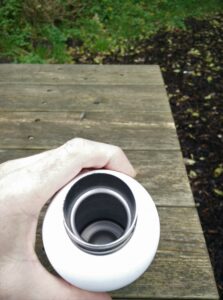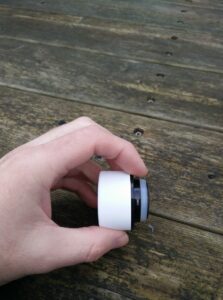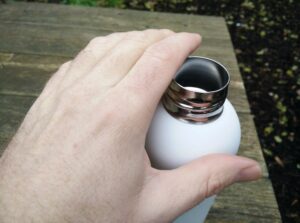by Todd Walker

I couldn’t believe what a student told me in Science class a few years back!
“You grow meat in the ground.”
What!?
I fought back the urge to laugh. He was dead serious. Clearly, “No Child Left Behind” wasn’t working, or was it. We’re all ignorant on certain subjects, but growing meat in the ground?
This was not a joke or prank like asking a plumbing apprentice to fetch the pipe stretcher off the truck.
His alienation from the real world was all too evident, alarmingly so, as he truly believed what he believed. I dug deeper. He said, as if this was common knowledge, “They (rancher-farmer) buy meat, like rib eye, unwrap the plastic, and bury the steak in the ground like garden seeds. It grows and farmers pick it, re-wrap it in plastic and people buy it in the grocery store.”
Yup, this conversation happened. It felt like the scene from Neverland in the movie Hook. I was in the middle of a rainbow-colored food fight with the Lost Boys screaming BANGARANG!!
My ‘Lost Boy’ had never been to a farm. Ever. He’s not alone. The complete lack of hands-on experience with the real world, not the electronic variety, is at epic levels.

Students stitching bark baskets.
Our children have lost a vital, primal connection with nature, the real world. They suffer from a condition called Nature Deficit Disorder (NDD).
The term coined by Richard Louv in his book Last Child in the Woods, is a result of our plugged-in culture which keeps kids and adults indoors. On average, kids spend 1,200 hours per year staring at electronic screens. The disconnect from nature goes against what human brains are hard-wired to experience… the Great Outdoors!
Research shows that children who learn and play outdoors are enriched personally and academically in many ways:
- Improved attention spans
- Enhanced creativity
- Increased academic success
- Improved reading comprehension
- Higher levels of self-discipline, language and social skills
The cure for NDD is simple. Get outside.
“It is one of the blessings of wilderness life that it shows us how few things we need in order to be perfectly happy.” – HORACE KEPHART, Camping and Woodcraft, 1917
From personal experience with my oldest grandson, introducing him to woodcraft skills created a hunger to get outside. After his first hike to my fixed camp in the woods, he was noticeably anxious. Within 15 minutes of settling in, he turned to me and said, “Ya know Pops, I don’t feel so scared now.”
Professionally, I’ve witnessed transformations in students diagnosed with all sorts of three and four-letter ailments. This study reinforces my observations. Students who struggle to function inside the four-walled school-house seem to thrive outdoors. I’d argue that all students, especially those who willingly conform to the box-mentality, need to go wild.
The Hand-Brain Connection
Instead of swiping a finger over a pad, children need to touch dirt, clay, wood, leather, fibers, animals, hand tools, and day-old campfire charcoal. Using fingers and hands to manipulate tools to create useful things from nature’s resources builds the relationship with the real world. Hands-on learning with reflection on the act of doing the stuff gives a depth of experience no book or screen can offer. Experience is the rocket fuel for learning.

Cutting rounds for “burn and scrape” spoons and bowls.
Other research shows that working with our hands makes our brain happy. Cutting tree bark, boring holes with an awl, and stitching sides to make a berry basket develops dexterity, a physical skill lacking in our smart-phone culture. Looking at an actual physical thing you created with your hands has rewards beyond the crafted item. The importance is not so much the product but the active practice and engagement.
Junior high shop class supplemented the hands-on education I caught from helping my daddy in his plumbing and welding business. I use the term “caught” since that’s how Daddy passed on his trade skills. Mr. Johnson, our shop teacher, taught us how to use all the cool power tools in that dusty cinderblock classroom. And we made stuff, some of which I still have to this day. No bloody fingers were left on the table of that monstrous radial arm saw either. Helicopter parenting was not a thing during the Nixon Administration.
The tree stump in front of our single-wide trailer must have had a coffee can of nails sunk into it. I’d sit there and smash steel, and my thumb occasionally, into wood grain like it was my job. I was 8 or 9 at the time and content to “waste” nails. The repetitions served me well on a few tree houses in my youth, and the subfloor in our new house Daddy built in 1975.
There are still Lost Boys out there shouting BANGARANG!, out of touch with the real world. There was, and I still have hope that there can be, a generation of boys and girls who fixed their own flat bike tires, carried pocket knives to the woods, picked rows of butter beans, and were content to be swallowed up by nature.
What if we could grow bacon on vines? I digress.
Keep Doing the Stuff of Self-Reliance,
~ Todd
P.S. – You can also keep up with the Stuff we’re Doing on Twitter, Pinterest, YouTube, Instagram, and Facebook… and over at our Doing the Stuff Network.
P.P.S – If you find value in our blog, Dirt Road Girl and I would appreciate your vote on Top Prepper Sites! You can vote daily by clicking here or on the image below. Check out all the other value-adding sites while you’re there…

Thanks for Sharing the Stuff!
Copyright © by Survival Sherpa: Content on this site (unless the work of a third-party) may be shared freely in digital form, in part or whole, for non-commercial use with a link back to this site crediting the author. All links in articles must remain intact as originally posted in order to be republished. If you are interested a third-party article, please contact the author directly for republishing information.


















